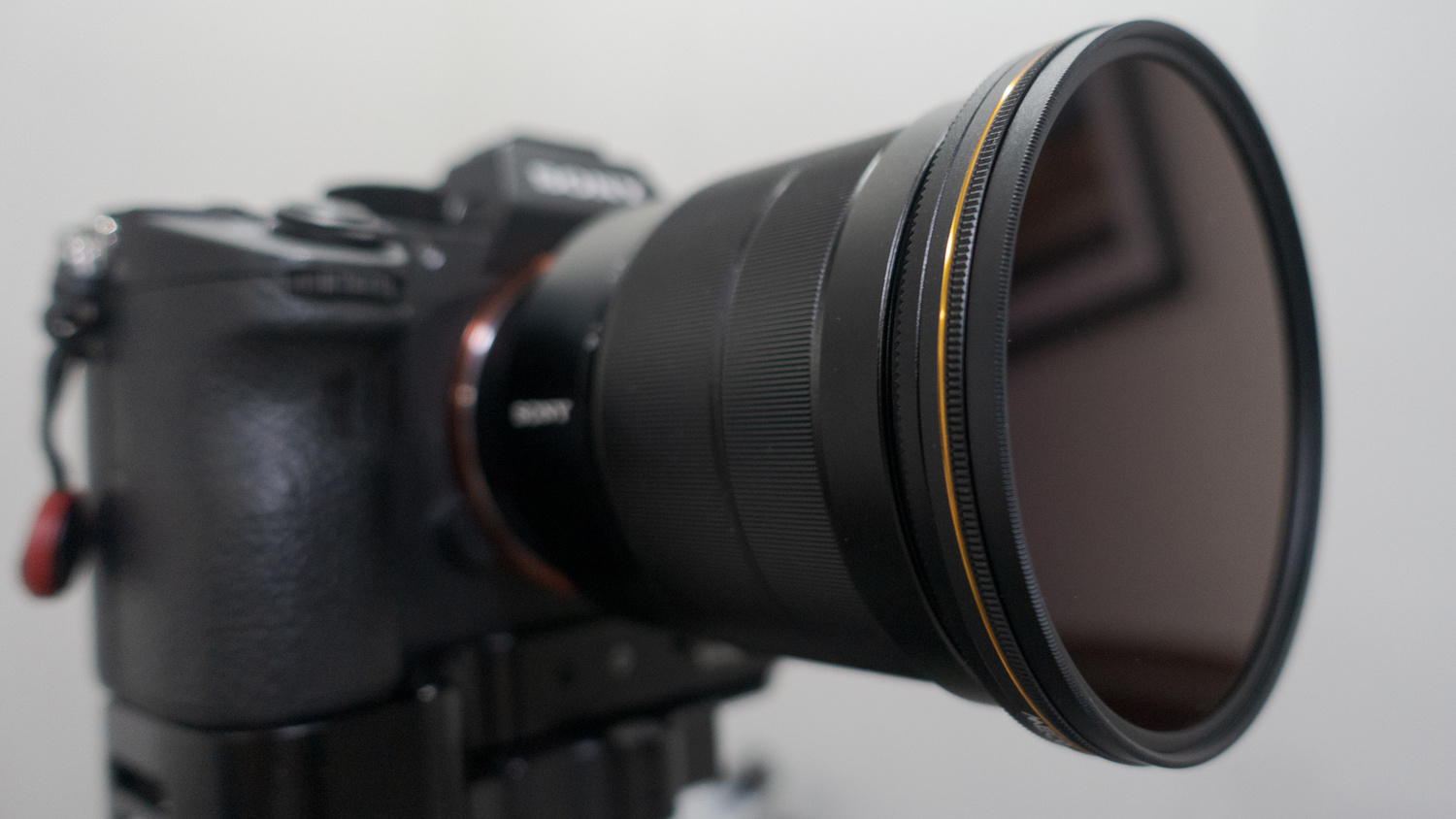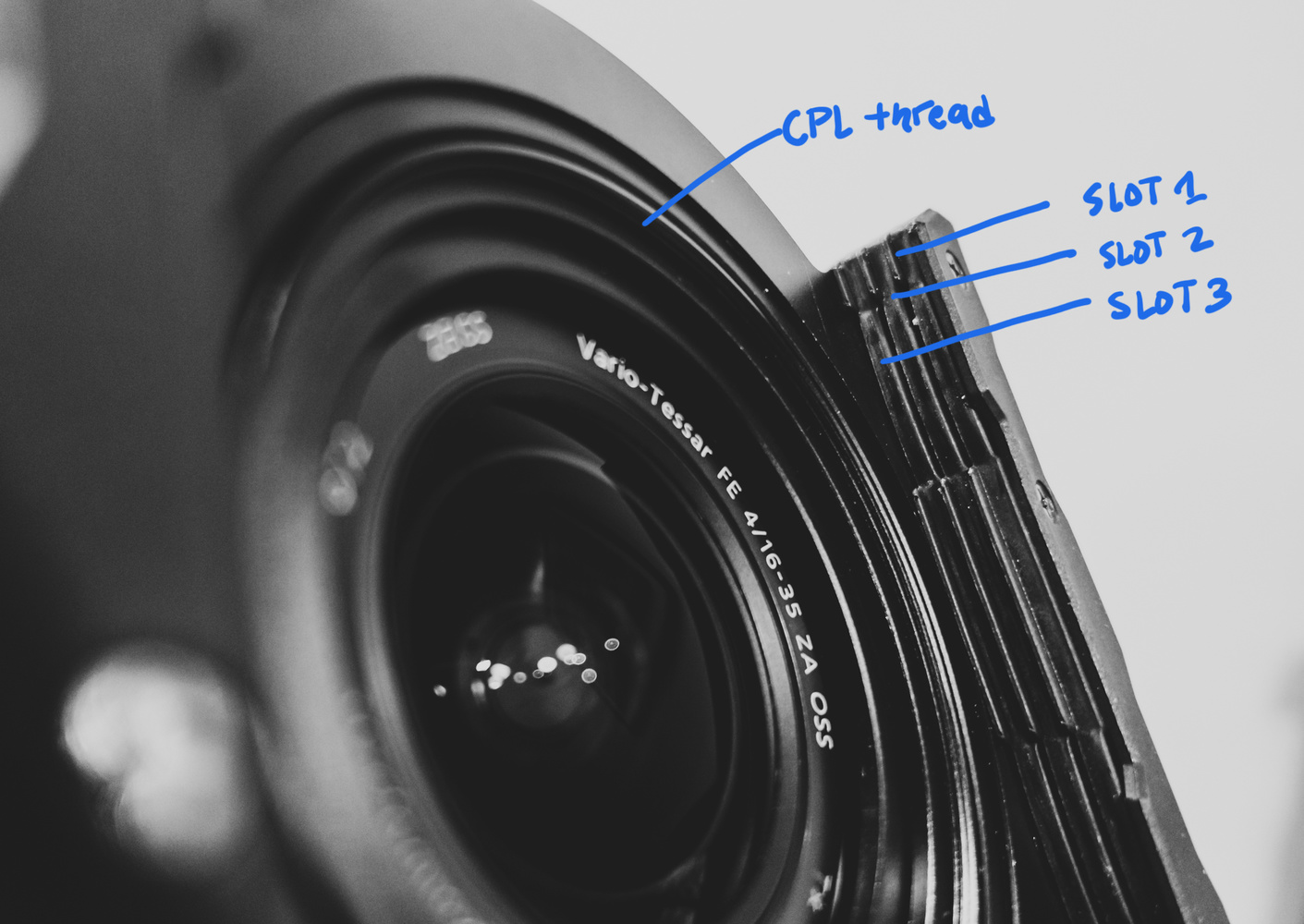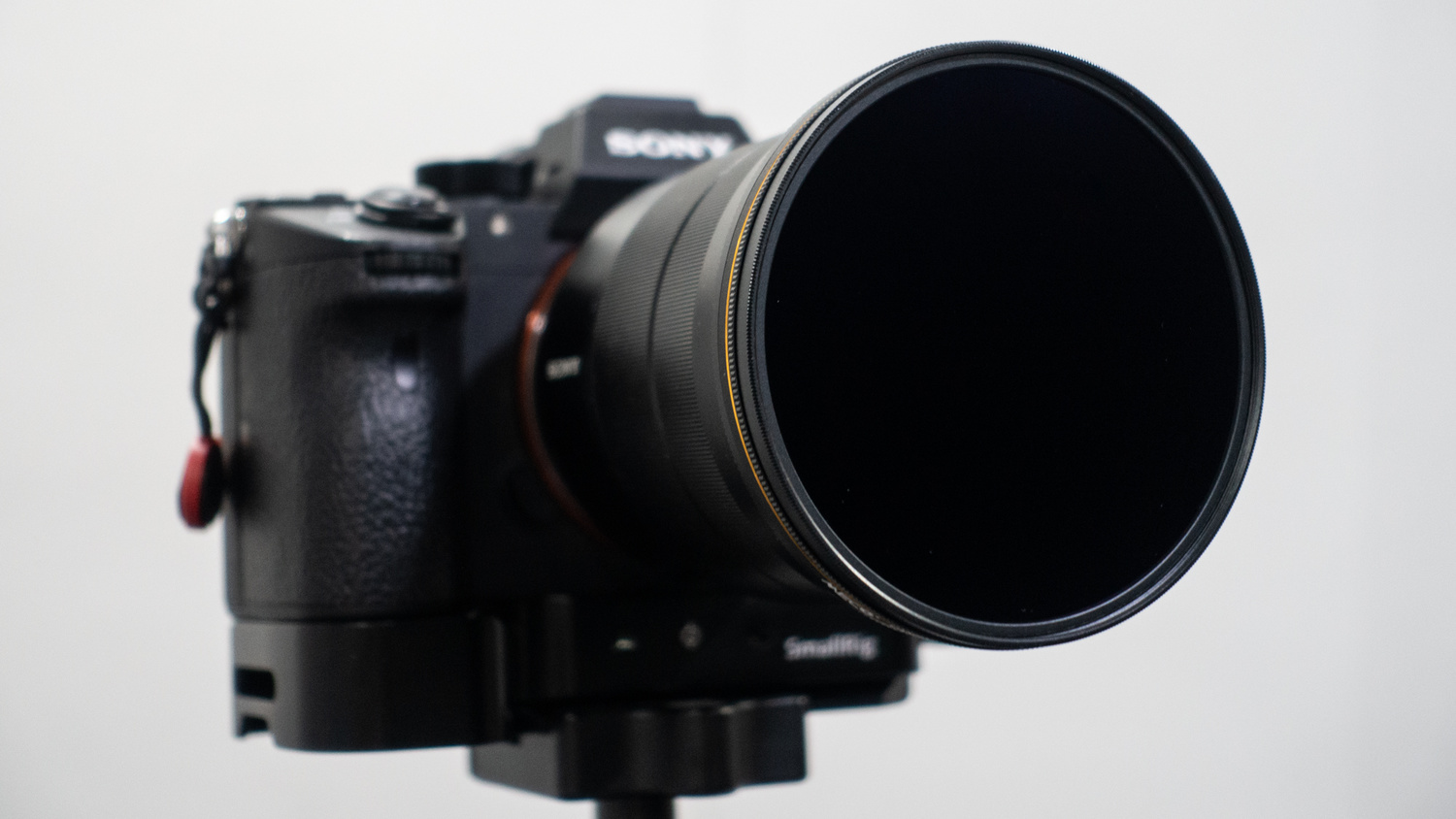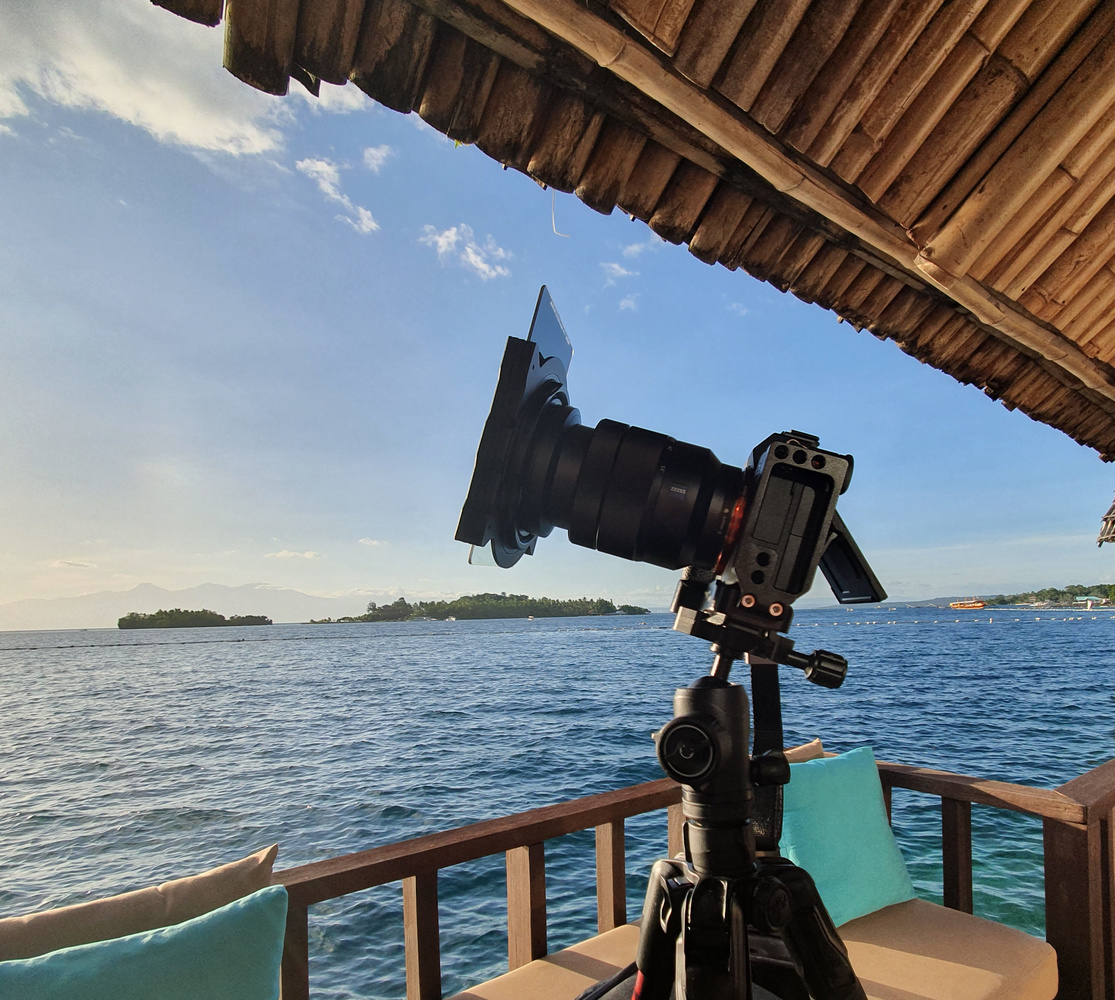Many aspiring photographers get intimidated by landscape photography because of their unfamiliarity to filters. While filters are not 100% essential to learning landscape, understanding this topic before making choices can lead you towards better gear decisions.
One of the most basic yet most common questions asked when talking about filters for landscape photography is whether to get screw-in circular filters or square format filters with a filter holder. The answer actually isn’t based on anything related to the output of the shot, nor is it related to any artistic intent aspect but is actually a simple logistic matter.

Circular Filters
Every photographer’s first notion of filters are almost always circular ones. Probably because most entry-level camera kits come with a free circular UV filter. In actuality, circular filters are very handy especially for anyone who is just trying out ND filters and has not entirely committed to the genre. The only limitation of using circular filters is the fact that you can only stack about 2 or 3 at a time. Going beyond that would give you an unwanted vignette depending on the focal length of your lens.

2 stacked circular filters 72mm to 82mm step-up ring
Another disadvantage of stacking circular filters is the fact that most of them have a frame of about a half inch, the space between the glass layers of the stacked filters is a breeding ground for nasty flares. Flares come about whenever light bounces back and forth between two layers of glass. This becomes more intense when the filters involved have an IR coating because they reflect or rather, deflect infrared light. IRND filters, by that principle, should only be used on the outermost layer of the stack. However, circular filters are good when you want to keep a minimal setup and don’t intend to use more than two filters at a time.
Square Filters
Square filters are obviously more ergonomic than circular filters. This format comes in handy when you stack about 3 or 4 filters at a time. The general recommendation is to use as few layers as possible because any filter, no matter how good or expensive, decreases your overall image quality by a minute percentage. That minute percentage usually is barely evident but adding more layers to the stack exponentially increases that to a point where it might be noticeable.

Another simple reason to choose square filters is the intention to use Graduated Neutral Density (GND) filters. These filters very rarely come in circular form and having them in the rectangular shape gives you more control of its effect. GND filters have a graduated tint density for limiting light in order to balance the frame or simply decrease the brightness in one fraction of the frame. This comes in handy for situations wherein the sky is much brighter than the foreground, or the city lights are brighter than the night sky. Controlling the median point is done by sliding the filter up and down. This can only be done using square filters on a filter holder.

The last obvious reason to choose the square format is the fact that it’s easier to install and remove them once you have the filter holder in place. A filter holder has 2 main parts. An adapter ring that screws on to the front part of your lens, and the main holder which connects to the adapter ring. Most modern filter holders have a single screw-in slot on the filter holder (or sometimes the adapter ring) for a circular polarizing filter. This filter is probably the only filter that never comes in square format and that’s because of how it works.

Filter holder slots
On the main filter holder are slide-in slots for square filters. Most holders come with 2 to 3 slots. Going beyond 3 usually gives you a vignette which is due to the inner edges of the slots peeping into the sides of the frame. The biggest ergonomic benefit of this is not having to remove each layer by screwing in and out all components of the stack. Filters can be removed individually much faster and replaced much faster than with circulars. This might not be much of a major concern at first but in situations with dynamically changing light conditions, the additional 3 to 5 seconds of removing a single layer can make you miss your intended shot.
Making Your Choice
Your choice should be guided by whether or not you think you’ll be doing landscape photography long term, and whether you want to lessen the number of times you purchase individual filter. Getting square filters is obviously a bigger, but one-time investment. Usually, purchasing a filter kit gives you most of what you would need in the field and getting additional filters individually would be much easier because square filters are not lens size/diameter specific unlike circular filters.

Relatively less complicated setup with circular filters
Since circular filters are specific to the filter size or diameter, that would mean that if you eventually replace your lens with one with a different size, all of your existing circular filters would not be entirely compatible to that lens. Yes, you can use a step-up ring to make them fit, but the problem of a flare usually comes in. In comparison, changing lenses with the square system only requires you to get an additional adapter ring for that specific size and you’re good to go.

Starting to learn landscape photography should not be limited by the availability of lenses. Remember that the genre is a crucial game of composition and time of day. Having filters can help the photographer apply certain visual effects to better improve the composition and coherence of the elements. Knowing which filters to get before you spend out on them is recommended to avoid mistakenly spending on something that you don’t need or something that you won’t be using long term. With all of the sudden changes in standards for camera gear, having filters that you won’t have to replace for at least 5 years can be helpful.







Thanks for the article. I love being in the field and working with my filters. I know that you can do a lot in Lightroom but I don't like post-processing so much.
Lightroom can do wonders but it (and your raw file) also has limitations that can very easily be solved by filters. :)
10 cents (2 x 5c) from me:
If reshooting isn't an option (like a schedule or lotsa miles away), I so much rather stack filters in front of my lens and have it right in camera than finding out at home that the bracketed images refuse to stack nicely due to cloud/ tree/ Murphy movement.
Circular filters are my weapon of choice when the desired effect is a homogenous one.
When it comes to graduated filters, circular ones are to me as useful as an inflateable darts board.
Because I really really like to put my horizon in my composition where I want to, and then adjust the graduated effect by moving filters up or down. And not having to run my horizon smack dab through the middle of the frame.
Thats precisely why circular GNDs never became popular
Im currently in the process of deciding if i want to use Square filters or not. Im not sure i want to lump around the extra weight and bulk for the amount i use them and rarely do i have a scene where a grad ND would actually work, Horizons are rarely straight and unobstructed on the shots i take.
Thank you for mentioning weight and general bulkiness or square filters.
I have both square and circular, and honestly my circular get way more play because when I backpack they take up only a fraction of the amount of space.
If you are going to work with just the polarizer, then circular filters are good, but then if you need graduated reduction in light (matching one half to the other half), then square/rectangular one is the best since you can adjust the line of effect easily by turning around the filter holder.
Even polarizers are meant to be turned to find the best angle to reduce as much as reflection as possible.
But yeah, you'd lose out on the convenience. I usually carry 3 filters in a pouch during backpacking. Except in winter, fixing the adapter + filters are okay. Circular ones come in handy during sub -20 winter since you don't have to stay there and deal with the filters.
Yeah i think thats the dilemma, circular filters are much less real estate in your bag, i have 3 step rings and 4 round filters currently. Using square would increase that kit considerably. Modern bracketing is normally good enough to remove the need for grads these days id say but i do see some amazing single shots taken using grads, that were 'right in camera' as opposed to doing lots of post production.
Not if you choose strategically. I survived for 4 years with just a 3-stop, a 10-stop, a 3-stop soft GND and a CPL. The difference in space shouldn't be much compares to what you said you have.
Yeah fair point, i need to make a decision definitely.
Grad NDs are never really hindered by thing protruding from the horizon. That's why you have Soft edge GNDs. Most modern brands make ones that don't give you any problems.
This is the first time I have read someone claim a filter didn't work for their specific camera. Can you please share what issues you had? What filters weren't working? What you were trying to achieve with the filters?
You are stating that both circular and linear polarizers, as well as neutral and graduated filters don't work on your Canon M6. All of those filters have different characteristics and while the functionality of polarizers are different they still act in a similar fashion. The same can be said for NDs. But to claim that none work, and then reference an article in which the original poster claims one thing then backtracks later with a complete 180 suggests user error.
On top of this you're not saying what's wrong, but just claiming the filters are wrong. Well, again, this is news to me and I am sure plenty others.
I use a circular polarizer in my interior photography work. I own, and shoot with either a Canon 5D Mark IV or a Sony A7iii. Using the same filter on both I have found they work in the same fashion. My goal is to remove unwanted reflections and that is what I achieve. Granted, I know the limitations of the filter. Shooting at 16mm with a circular polarizer is going to give me a far different result than at 50mm and to expect any differently is crazy talk.
I'm not here to say that what you are experiencing is absurd. What I am stating is that you're not saying or showing us WHAT SPECIFICALLY is wrong in your eyes.
Look at....👉100 %HQ Material for the production of filters
https://en.m.wikipedia.org/wiki/CR-39
I started out with circular ND filters but didn't like the vignette they produced and were such a hassle to screw on and off when shooting so I eventually switched to square and will never go back.